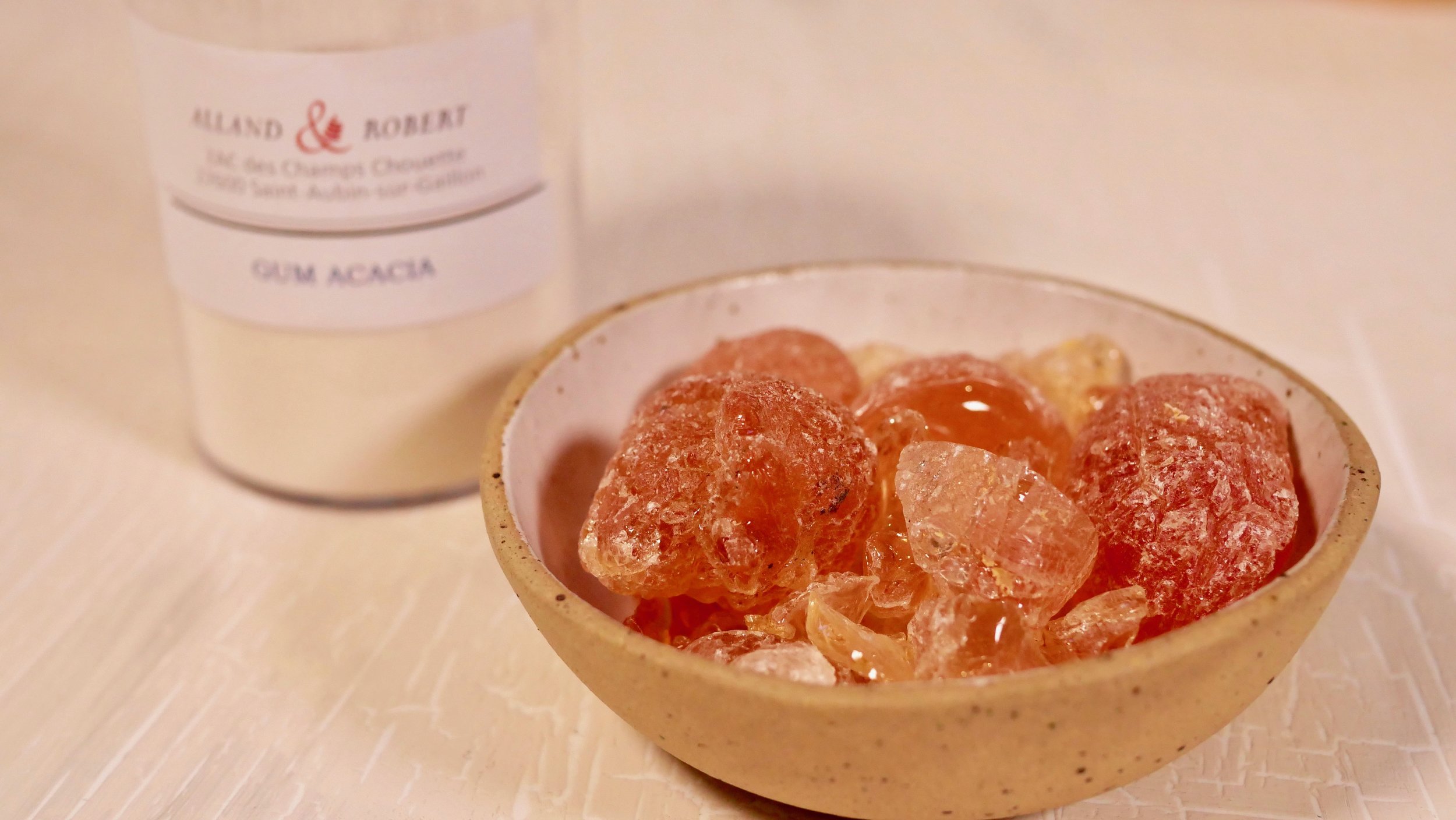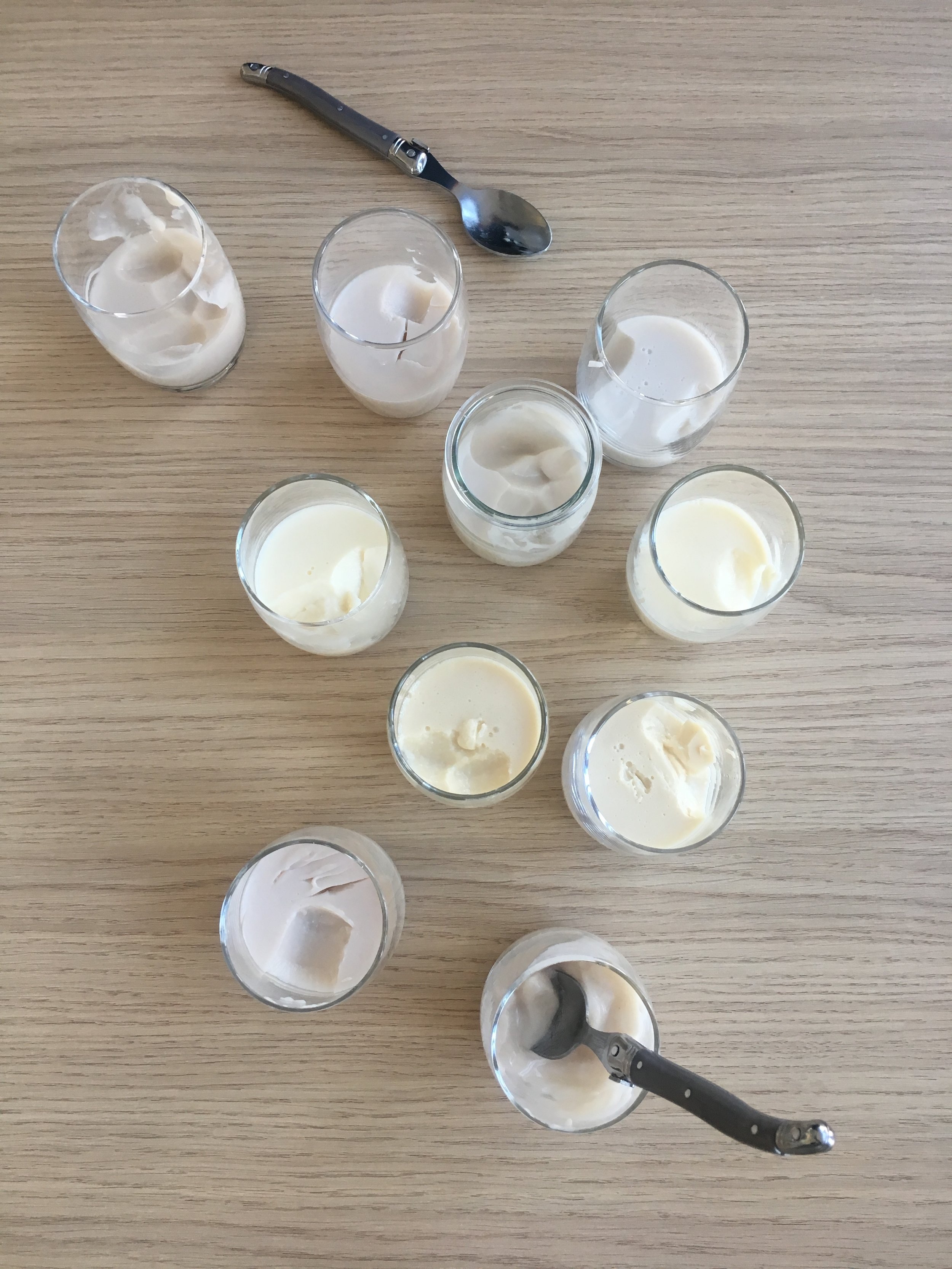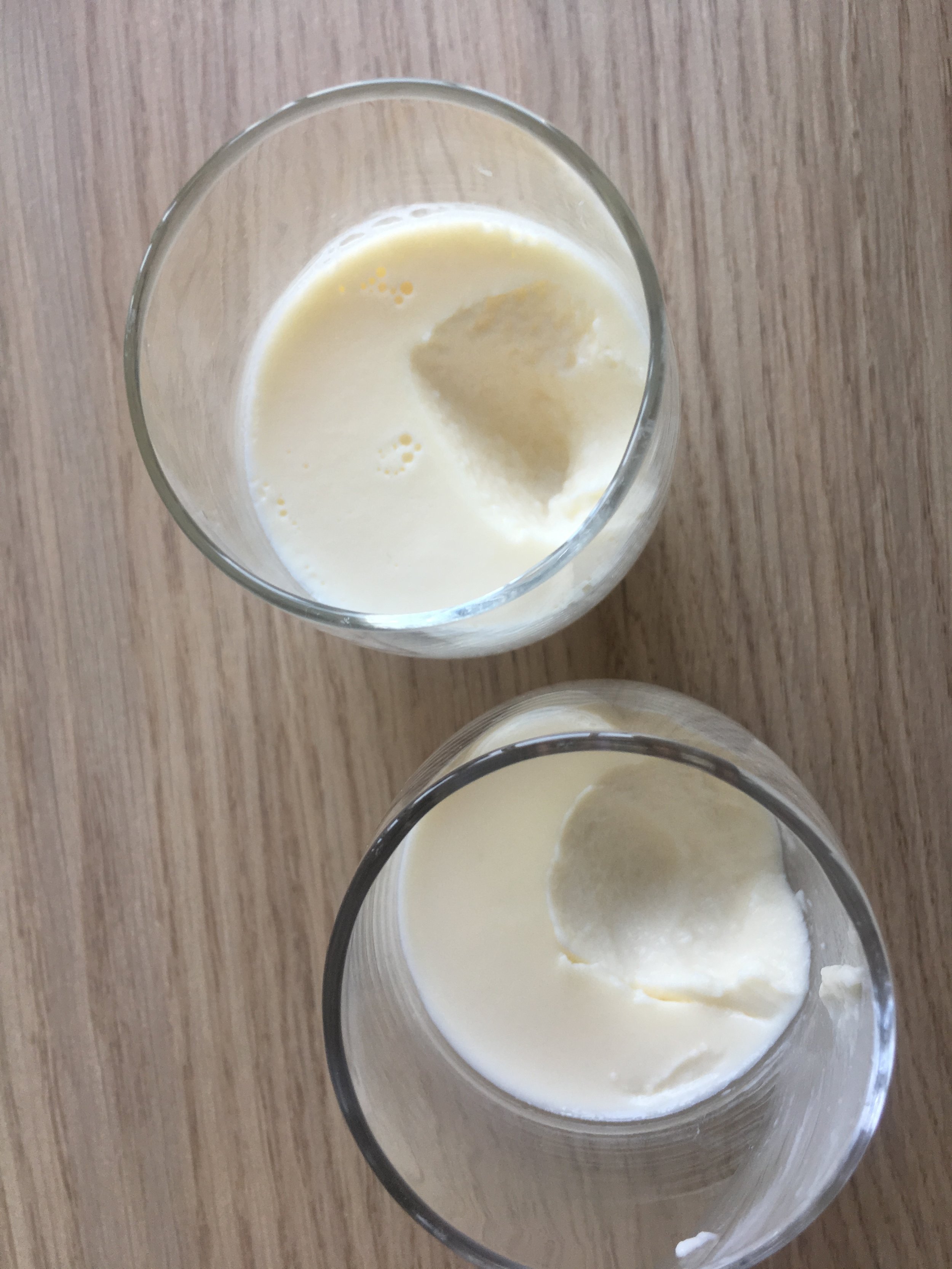I don’t eat gelatin, so panna cotta is something I’m not usually able to try. A common feature on restaurant menus (it’s super easy and quick to serve and can sit in the fridge until a customer orders it), I’ve always had to pass.
Vegans have been experimenting with gelatin alternatives for a long time and it’s agar agar that is usually the setting agent of choice. True, agar agar (a seaweed derivative) will set a milky mixture but it lacks much of the gentle set and lovely texture you get with gelatin.
I was invited to France in December by Alland & Robert, a family firm founded in 1884 who import and produce Acacia Gum products and who were keen to share their findings in this area.
Acacia gum (aka Gum Arabic) is sourced in the ‘Gum belt’ of Africa, in the south of the Sahel. From Senegal to Eritrea, the harvest zone covers Mali, Nigeria, Chad, Niger, Sudan and Ethiopia. The gum harvest provides a revenue to millions of people in this region and the way the gum is harvested requires no industrial equipment - it is done by hand and the small cuts that are made in the (wild) tree bark to collect the harvest are not harmful to the tree. It is relatively unknown to the general public but it’s a completely natural ingredient found in many common food products. Look on food and drink labels and you’ll start seeing it everywhere! It is given the E number E414 as it is an ‘additive’ but it’s really important to know that not all E numbers are bad! I was definitely guilty of this, but I was wrong. All sorts of E numbers are totally natural products, simply assigned an E number to show they have been tested as safe for consumption and that their use is regulated. Beeswax, for example, is E901. Lanolin is E913. Castor oil is E1503. As a highly safe additive used for many years, acacia gum offers numerous functional properties (Gum arabic is used in the food industry as a stabilizer, emulsifier and thickening agent and to bind the sweeteners and flavorings in soft drinks). You might also have heard of ‘gomme syrup’ - a solution of sugar and gum arabic in water which is sometimes used in cocktails to prevent the sugar from crystallizing and provide a smooth texture.
What Acacia Gum can’t do, is set pannacotta alone, but what it can do is combine with agar agar to really closely mimic the texture of gelatin. This is pretty revolutionary stuff and is the result of lots and lots of experimenting on the part of Alland and Robert.
We (I was fortunate enough to be sharing the experience with Miriam Nice from BBC Good Food) joined the Alland and Robert team at their test kitchen an hour north of Paris and spent time learning more about Acacia Gum before tasting a range of products both with and without the gum added.
Results were interesting; a tiny amount of Acacia Gum added to bread recipes made it stay softer for longer. Two day old bread was noticeably more chewy with the addition.
Next up was ketchup. Removing sugar from products is not as simple as literally taking it out; the sweetness can be replicated with things like Stevia but the texture needs to be adjusted to get the same mouth-feel. Again, a small amount of acacia gum made a noticeable difference.
We then did a blind taste test of the various vegetarian pannacotta recipes their team had been working on. All used agar agar to set. One used dairy milk and cream, the others used various plant based milks; soya, almond and coconut.
They provided us with samples of each version with and without added acacia gum.
Adding the acacia gum to the agar agar made a very noticeable difference - texture was vastly improved and mouthfeel was much, much nicer. Creamier, smoother - basically much better!
I wanted to create a totally vegan recipe so the cow’s milk option was out. My personal favourite from the versions we tasted was the coconut but I had a feeling oat would be even better.
Once I got home, I set about experimenting. After trialing various recipes, this is my ultimate vegan panna cotta. I’m delighted with it and I really hope you give it a try.
Panna Cotta (vegan)
500ml Oatly cream (available in many health food shops and online here, here and here)
50g golden unrefined caster sugar (I used Billington’s, which is certified vegan. The processing of white sugars sometimes uses animal products, so check the label if cooking for vegans)
2g agar agar flakes (1.5 level tsp) (sea vegetable gelatine) - (I used the organic Algamar brand, which I found in my local health food shop)
10g acacia gum (aka Gum Arabic) powder - (this one available on Amazon is recommended)
0.5 tsp vanilla extract or the seeds from 1 vanilla pod.
For the berry compote
175g mixed frozen berries (I used half blueberries, half raspberries)
15ml lemon juice
15ml water
1 heaped tsp sugar
Method
Makes 6-8 small glasses
Start by measuring out all your ingredients very carefully using digital scales and accurate kitchen measuring spoons.
Mix the agar agar in a small bowl with the sugar and mix well.
Shake the oat cream before opening and tipping into a small saucepan.
Add the rest of the ingredients into the pan and turn the heat on low.
Start mixing with a rubber spatula. Keep stirring consistently and slowly bring the mixture to a gentle simmer (95 degrees Celsius if you have a thermometer).
Once it has come to a simmer, cook for 5 minutes, moving the pan off the heat every now and then to keep the mixture from getting any hotter.
After 5 minutes, remove from the heat and leave to cool for a couple of minutes before pouring the mixture into a blender (make sure to scrape every last drop out of the pan) and blitzing on high for 10 seconds.
Immediately (so the mixture doesn’t start to separate), pour the mixture between 6 small glasses. Tap on the counter to remove any air bubbles and leave to cool for 10 minutes before moving to the fridge to set. This will take about 3 hours.
While the panna cottas are setting, make the berry compote.
Add the frozen berries, lemon juice, water and sugar to a small saucepan. Mix to combine and bring to a boil for a couple of minutes, stirring occasionally.
Leave the pan uncovered and over a very low heat, cook on a very low simmer, until most of the water has evaporated. Stir regularly.
Put to one side.
When the compote is cool and your panna cottas are set, you have two options; either spoon the compote on top of each glass or run a small, sharp knife carefully around the top of each panna cotta glass and tip out onto a plate. Spoon a little compote onto the plate and serve immediately.
Thank you to Alland & Robert for sponsoring this post. You can find more information on Acacia Gum and Alland & Robert here on their site.





































